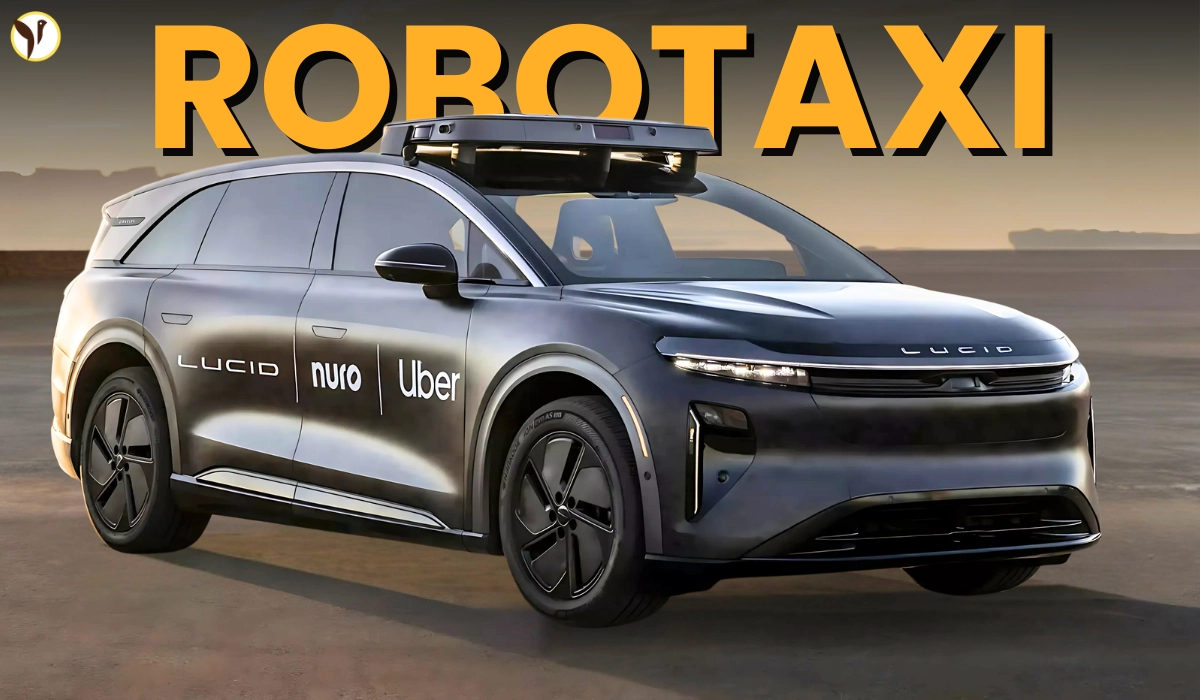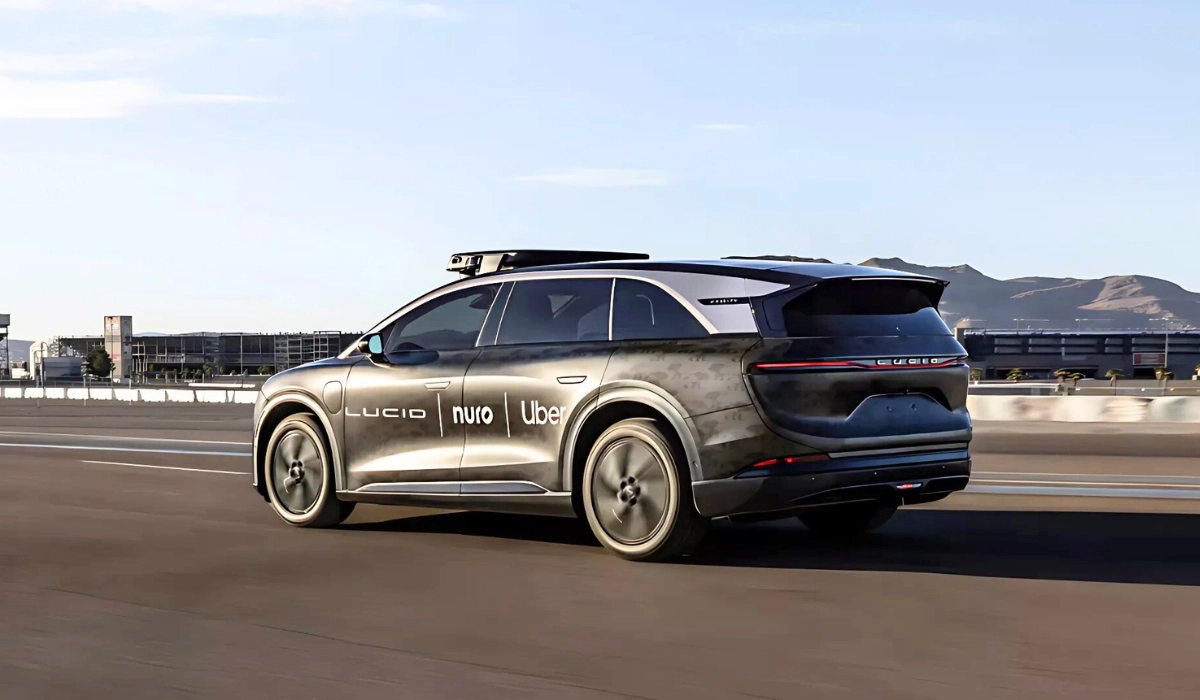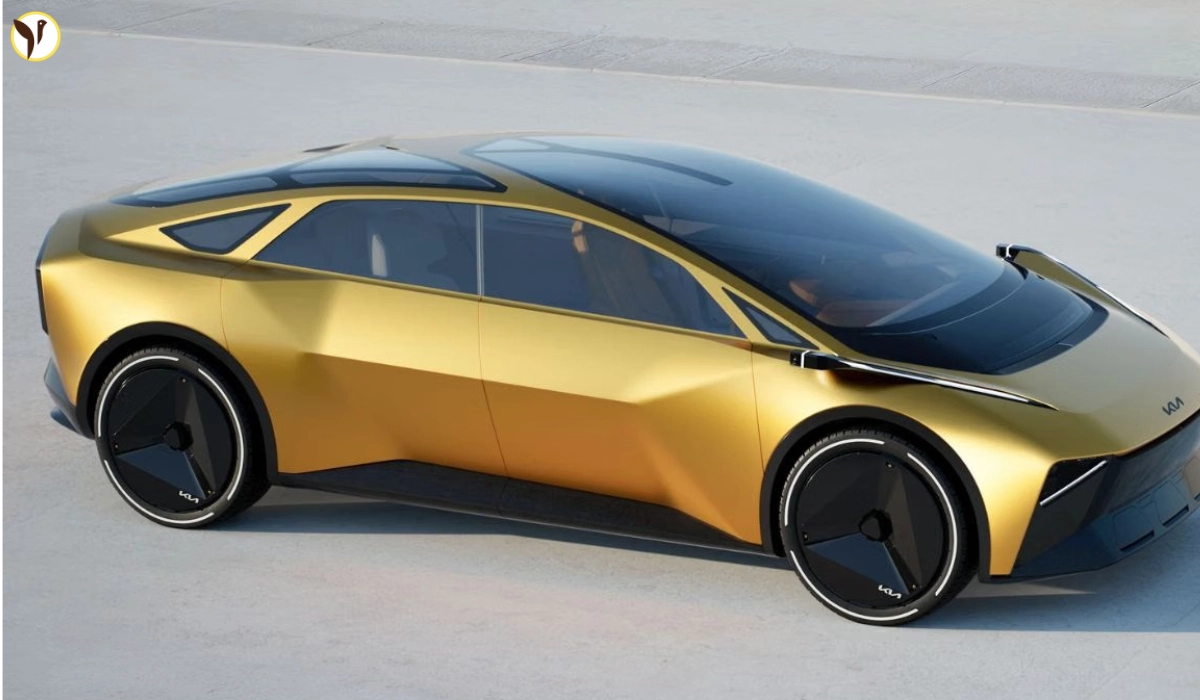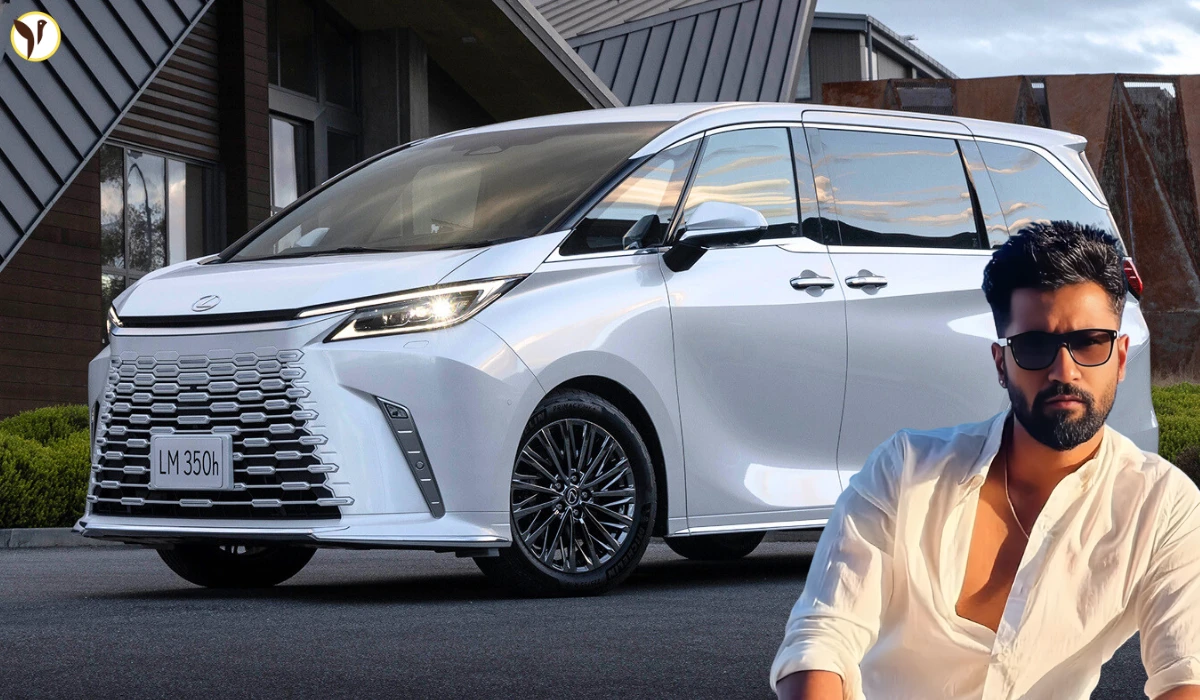In a partnership announced July 17, 2025 that should transform urban mobility, Lucid Motors and Uber are planning on bringing autonomous electric robotaxis on line by 2026.
This partnership has ignited significant interest in both the EV and ride-hailing sectors, as Lucid and Uber will bring Lucid’s high performance electric vehicle capabilities together with Uber’s market access and data capabilities in what may prove to be one of the boldest experiments in the drive towards driverless mobility.
What Is the Lucid-Uber Robotaxi Partnership?
This is not a simple handshake or test program - this is real contract with full commercial purpose. Lucid will provide purpose-built electric vehicles for Uber's upcoming autonomous taxi service, which plans to deploy them in select U.S. cities starting in 2026.
- Robotaxis will come based on Lucid's upcoming auto industry first "Space Concept" EV platform.
- These cars will have no steering wheel or pedals, demonstrating full implementation of Level 4 autonomous driving.
- Uber will manage the fleet, software integrations, and customer logistics using the existing Uber app.
"We believe autonomous electric mobility is the future, and together with Uber, we are bringing that future to millions of people," said Lucid CEO Peter Rawlinson in the announcement, alluding to the critical importance of sustainable, scalable mobility.
Lucid’s premium EVs. @nuro's proven L4 autonomy. @Uber's global ride-hailing network.
— Lucid Motors (@LucidMotors) July 17, 2025
Together, we're launching a next-gen robotaxi fleet — 20K+ vehicles, starting in 2026.
Read more about today’s announcement here: https://t.co/f7yAyyyt7j pic.twitter.com/bwspjdh1mr
Why This Partnership Matters in the Race for Robotaxis
While Tesla, Waymo, and Cruise have all appeared in the headlines for their autonomous efforts, there is a difference to highlight with this partnership for several reasons:
- Firstly, Lucid has never entered the ride-hailing space before (and this is the first B2B fleet for the company).
- Secondly, Uber does not have an autonomous vehicle division like some of their competitors (for example: Lyft), and a partnership with an EV leader helps Uber build towards a future with autonomous vehicles.
- Thirdly, the robotaxis are fully electric, built from the ground up for autonomy and not adaptations of existing Lucid vehicles.
Not just about technology, we are ready to scale fast with a partner that has billions of ride data points and relationships or rider trust and infrastructure.
When will Uber Robotaxis Be Available?
Because Uber and Lucid plan to pilot test by late 2025, official city rollouts are expected in early-to-mid 2026.
Target cities include:
- San Francisco
- Los Angeles
- Miami
- Austin
These cities were selected for their favorable AV regulations, heavy Uber usage, and existing Lucid infrastructure for service.
Uber CTO, Sukumar Rathnam stated:
“Lucid’s design and battery leadership combined with our global ride-sharing platform puts us in a unique position to scale safe, autonomous rides”.
How Will the Robotaxis Work?
These Lucid-Uber robotaxis will look and feel very different from today’s cars. Here's what riders can expect:
- No driver seat or manual controls – the car will be completely autonomous.
- Interior optimized for comfort – reclining seats, voice control, large screens.
- AI route optimization – learns from Uber ride data for smoother, faster trips.
- Zero emissions – 100% electric with long-range battery packs.
The user experience:
Passengers will book a robotaxi via the regular Uber app, just like any other ride. An option will appear labeled “Lucid Robotaxi” (price point not yet revealed). The car will arrive driverless and unlock automatically using app verification.
Market reaction and investment details
After the announcement:
- Lucid’s stock jumped ~35%, setting a five-month high
- Uber’s shares also climbed modestly, while Tesla slipped.
- Uber’s $300M purchase for roughly 3.3% of Lucid comes via its SMG Holding unit
Uber will also invest hundreds of millions in Nuro and even take a board seat
What People Are Saying Online
Since the news broke, social media has been buzzing. Many EV enthusiasts and Uber customers have shared their excitement — and concerns.
@SawyerMerritt, a well-known EV news reporter, tweeted:
“Lucid entering the robotaxi game with Uber is huge. This isn’t just another AV test. This is real commercial scale.”
NEWS: Uber is investing $300 million in EV maker Lucid in a robotaxi deal that aims to start with one major U.S. city late next year, the companies said.
— Sawyer Merritt (@SawyerMerritt) July 17, 2025
Over 6 years starting in 2026, Uber will acquire and deploy over 20,000 Lucid Gravity SUVs that will be equipped with… pic.twitter.com/ac9TiQtsip
One Instagram comment under Uber’s official post summed up the general sentiment:
“It’s cool, but are these robotaxis safe? Will they work in bad weather? And how much will they cost?”
The Untold Angle: Why Lucid Chose Uber
Lucid has focused on the luxury EV market as a high-end rival to Tesla. What, then, is their motivation to get into the robotaxi space?
Well, insiders offered several perspectives:
- Lucid's low numbers for sedan sales over the last year (~6,000 deliveries in Q2 of 2024) made diversification unavoidable
- This partnership allows Lucid to monetize technology using fleet contracts versus solely relying on retail.
- Uber has tens of millions of daily active users, which provides instant exposure and high volume.
According to sources, this deal provides Lucid with an exclusive period for which Uber cannot work with any competing EV manufacturers on any similar Level 4 robotaxis. This gives Lucid a limited moat in the space.
Safety, Regulations & Public Concern
Not everything is going to be smooth sailing. Both companies are facing relevant challenges, including:
- Regulatory issues - Local governments will have to put an approval stamp on driverless operation in public spaces
- Safety concerns - Several recent incidents from Cruise and Waymo were not helpful in regards to public sentiment.
- Trust - Many riders still have a tendency to feel uncertain about getting in a car without a driver.
Lucid has stated their cars will be subjected to millions of virtual simulations and real-world operation prior to any passenger entering the car. Uber says they are also working closely with regulators and city planners to establish operational safety and transparency.
How This Impacts the Future of Mobility
This partnership could push other players to accelerate their efforts.
Implications include:
- Higher EV adoption: More exposure to electric rides for Uber’s mainstream audience.
- Job changes: Questions remain about how it’ll affect Uber drivers long-term.
- Urban transformation: Parking spaces, insurance, and public transport may all evolve.
Both companies are betting big. And if the rollout goes well, they plan to expand internationally by 2027.










